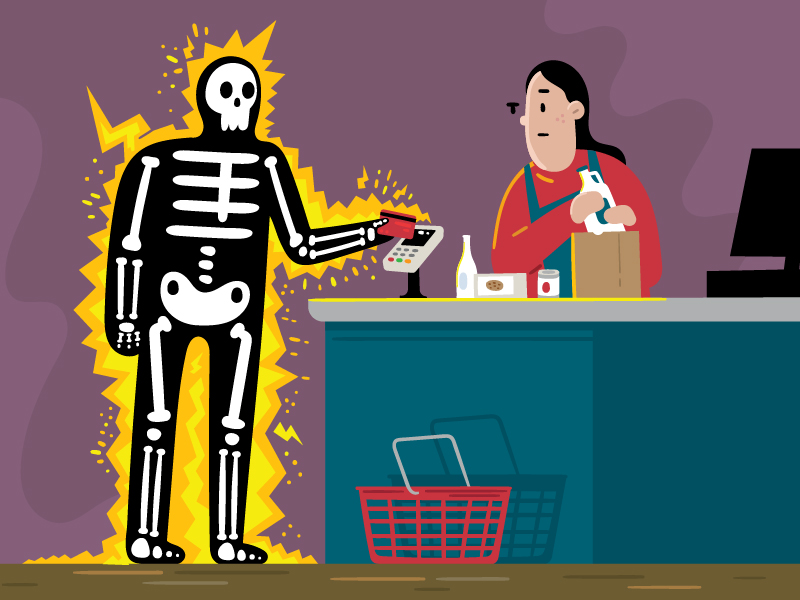Fifteen years ago, the world’s economy turned upside down after the collapse of the mortgage market.
But while the crisis and Great Recession that followed only lasted two years, the impact on the personal economies of millions of American families lasted for a decade or more.
“What we found is that banks transmit their funding shocks to their borrowers,” said Nikhil Paradkar, an assistant professor of finance at the University of Georgia Terry College of Business.
Paradkar and his coauthors — Rohan Ganduri of Emory University, Sudheer Chava of the Georgia Institute of Technology and Linghang Zeng of Babson College — analyzed anonymized credit records of 134 million American consumers through a data-sharing research partnership with Equifax. They found when banks saw access to short-term wholesale credit shrink, the banks shrunk the credit limits of existing customers by as much as 22.6%.
“More importantly, the transmission of this shock is not levied equally across all of the banks’ borrowers,” Paradkar said. “If anything, it seems the transmission of the funding shock is greater to borrowers that are least able to cope with it.”
On average, these consumers did not recoup their lost borrowing ability for a decade.
Their paper, “Shocked by Funding Shocks: Evidence from Consumer Credit Cards,” was published in the May 2023 edition of The Review of Financial Studies.
In a postmortem written for the Brookings Institution 10 years after the 2008 financial collapse, former U.S. Federal Reserve chairman Ben Bernanke wrote the crisis had two causes. First, consumers in the early 2000s took on too much debt and could not continue spending after home values dropped and sank their net worth. And secondly, banks took too many risks with their holdings, were undercapitalized and depended too much on bank-to-bank credit lines to remain liquid.
This bank-to-bank lending is referred to as short-term wholesale funding, and the shock to that system is what first drew Paradkar to this study, he said.
“I’m generally interested in how broad changes in the banking system — new technologies, new regulations or new crises — impact individual levels of consumption and economic power,” he said.
While it’s intuitive that banks would pass funding constraints on to consumers to protect themselves during a downturn, it wasn’t empirically proven this happened across the board. And no one did a quantitative study of how exactly the sudden constraints impacted consumers, Paradkar said. Recent advances and data analytics allowed his team to analyze 500 million credit card records and gather data on how different banks handled the crisis.
They looked at credit card accounts at 18 different banks and found banks relying more on short-term wholesale funding when the recession cut customers’ credit lines by an average of $1,558.
These credit line cuts had the largest impact on marginal borrowers using more of their available credit and lower credit limits. Subprime borrowers, on average, saw their credit lines drop 22.6%, while better-qualified borrowers saw their credit lines drop 15.2%.
“There’s an ongoing discussion in economics and finance circles about the true impact credit availability has on consumer spending — because the impact of an additional dollar of credit is different for different income levels,” Paradkar said. “When I was living on a Ph.D. stipend — at $27,000 a year in Atlanta — each dollar of credit expended would change what I was able or willing to spend. But now — at faculty level salary — an extra dollar of credit isn’t going to have much of an impact on my spending decisions. This paper explains a little more how decisions made at the banking system level involving credit impacts consumer spending.”
With credit constricted, consumers spent significantly less in the decade that followed. Even after the credit system recovered, consumers built up their savings and used lines of credit more sparingly.
There’s not enough data to know if the credit constraints the banks passed along to consumers impacted the post-2008 economic recovery, Paradkar said. However, this paper’s findings can help implement and maintain practical banking regulations to keep the same corporate credit crunch from impacting consumers so drastically in the future.

